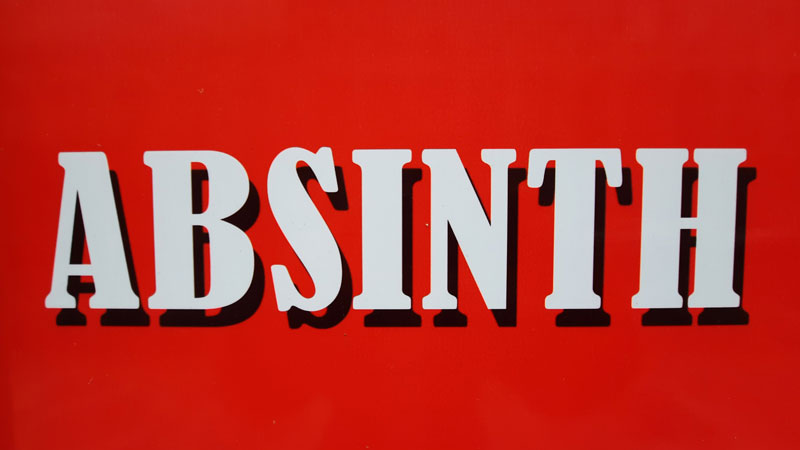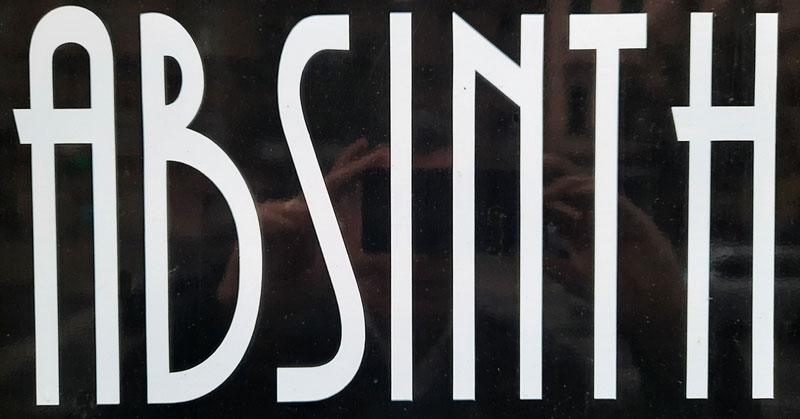The Truth About Prague Absinthe
You can buy Absinthe in many countries but if you look carefully at the ingredients and alcohol content you’ll see they vary wildly. On this post I’ll describe what to look for in bottles of Prague Absinthe, what’s definitely in it, what could be in it and how the strength is measured. Plus we’ll debunk a few myths along the way and I’ll give you some recommendations at the end.

Prague Absinthe Myth No.1 – It Contains Cannabis
It’s common to think that a bottle that appears to have a picture of Marijuana leaves should contain it but it’s a myth. The plant called Artemisia Absinthium or more commonly called Mugwort or Wormwood is one of the common ingredients in Absinthe so it’s this herb that gives it the green colour and mistaken aroma of Cannabis.
Prague Absinthe Myth No.2 – It’s Good For You
The origins of Absinthe are as a herb liquor which aids digestion and provides anti-inflammatory properties. This is because as well as Wormwood, the two other main herbs are Anise and Fennel which on their own are both well known for their digestive properties (reduces bloating and relaxing stomach muscles) so in that case it’s origins are very close to our popular herb liquor called Becherovka. The misunderstanding is that the herbs on their own must be good for you without considering the rest of the process and how much alcohol content you’ll finish with.
Prague Absinthe Myth No.3 – It’s Hallucinogenic
One of the chemicals released during the process of making common Prague Absinthe is called Thujone which comes from the Wormwood and is hallucinogenic if enough is present so if in doubt, look for a brand that does not use wormwood. In the USA, absinthe has to have little or no Thujone present at the point of sale as it is a known convulsant which can affect nerves and cause epileptic issues. In Europe the Thujone volume should be clearly displayed and in Czech it must not exceed 35mg/litre so your 0.04cl glass will not contain more than 1.4mg. But we’re not so fussy about the alcohol content as you’ll read further down.
Prague Absinthe Myth No.4 – Smells Like Cannabis and Tastes Like Mint
As mentioned above, the core ingredients for common Absinthe are Wormwood, Anise and Fennel. You can add whatever else you want to that to give the exact flavour that you want so something that tastes minty may have had spearmint added or something with a lemon smell may have had lemon balm added. Check the ingredients.
Prague Absinthe Myth No.5 – Anything under 60% is Rubbish
In the European Union we use the ABV (Alcohol By Volume) scale so all the numbers you see next to Absinthe offers will be ABV. If you are still using the “Proof” scale then multiply the ABV value by two. Most Prague Absinthe made locally will start at 60% ABV or 120% Proof. You can get brands that go as low as 25% ABV which means you’ll get the flavour without the kick but in general you won’t find much below 45% ABV or 90% Proof. To put it in perspective the strongest I have ever seen is 75% ABV or 150% Proof.
Prague Absinthe Myth No.6 – Sugar Lump Reduces the Strength
NO! Pouring Absinthe on a sugar lump will only make it more palatable (remember you could be drinking almost pure alcohol). Setting light to Absinthe will by definition burn off some alcohol but if you want less alcohol use ice or water or consider buying a brand with less strength.
Prague Absinthe Myth No.7 – If It Sounds French It’s Good
Historically the finest Absinthe is produced by France and Switzerland so it would make sense that they would have French names but in reality the Czech local producers caught onto that really fast and Prague Absinthe also has French-sounding names so don’t rely on the name.
Prague Absinthe Myth No.8 – Should Be Drunk Neat as a Shot
At it’s core Absinthe is still considered to be a stomach settling aperitif before eating and it’s rarely taken neat. Most reputable bars will expect you to add water to a small glass to see the louche (the liquid becomes cloudy – anybody that’s added water to Greek Ouzo or French Pastis will have seen the same). If you are thinking of doing Prague Absinthe with a beer chaser then prepared to be sick.
Prague Absinthe – Makes your pee pink
Actually this is correct but only under very extreme circumstances and mostly with homemade absinthe. Thujone is also a Ketone so if you are drinking homemade absinthe with a higher Thujone content then your body will react by ridding itself of the additional ketones which will turn your pee pink then purple. But generally you won’t see it because unless you are in the advanced stages of liver failure you’ll be unconscious or dead.
Some Recommendations

So from above the core things you should have learned are 1) Don’t drink it like a shot, add water to a small glass until it matches your taste. 2) Start around 45% ABV unless you are used to drinking alcohol like vodka. 3) Don’t mix it with beer. 4) French or Swiss produced Absinthe will be more expensive but will be better quality so check the label.
If you don’t know if you will like Absinthe then here’s a tip. Go into any bar and see if they sell Pernod which is basically the most common French version of Absinthe with zero Thujone and ABV 40%. This will help you to know if you like Anise and get a taste for the lower end of the alcohol scale but for about half the cost of the Prague Absinthe equivalent here. Then if you like that go to a place that specialises only in Absinthe like Absintherie in Prague where you can up the quality and strength but in all honesty I’d sooner spend the same money on a nice rum cocktail.
Something Related or a Few Minutes Away
Czech Beer – Font of Eternal Youth